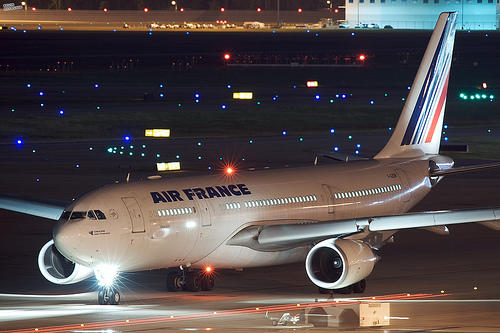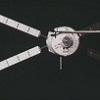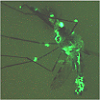The Airbus A330 operated by Air France was carrying 228 passengers on a flight from Rio to Paris when it went missing around 0230GMT on Monday

It’s being reported that Air France’s Chief Executive, Pierre-Henry Gourgeon, said a series of error messages was sent from the plane around 0215GMT, Monday, before contact was lost. The plane was flying through severe turbulence at the time and lightning has not been ruled out as a cause of the catastrophe.
The Australian Science Media Centre and the UK Science Media Centre issued a press release today with expert comments from within the aviation industry:
Stewart John, Fellow of the Royal Academy of Engineering and past president of the Royal Aeronautical Society.
“It is being reported that the pilot flew through turbulence, but that happens every hour of every day. These aircraft are designed to go through very powerful turbulence without being put at risk. Equally, they receive lightning strikes all the time, and the airframe is carefully designed to dissipate the electrical charge.
“This is a ?fly-by-wire? aircraft ? in other words it is completely dependent on its electronics to operate. But it has a huge amount of built-in-redundancy in terms of separation of wiring, backup power supply etc. Whether the lightning and turbulence together caused a catastrophic fault on this occasion we won’t know for some time.”
Dr. Guy Gratton, Senior Visiting Research Fellow in Aeronautics at Brunel University, said:
“Reports indicate that the Air France A330-200, flight B447, had recently flown through thunderstorm activity. This implies cumulonimbus cloud, which most pilots will seek to avoid if they can. Conditions within or close to cumulonimbus include strong vertical air currents, severe turbulence, hail and lightning. Whilst a modern airliner is designed to deal with all of these, none are desirable and aircraft damage is possible.
“The A330 is equipped with multiple communications systems, so a complete loss of communications at the least means a major electrical failure of the aircraft - particularly given that all major electrical supply components are duplicated or triplicated in the aircraft. Such failures are very rare.
“Given this, and that the aircraft is now be well past the time when fuel reserves would have lasted to, it is extremely likely that flight B447 has been lost. Weather related phenomena are likely to be a major part of any coming investigation.
“The A330-200 is fitted with a modern digital accident data recorder (commonly called a “black box”, although it is usually red or orange). Even if the aircraft has fallen into the sea, the ADR will have a sounding device designed to help accident investigators to find it. The ADR records a large number of pieces of information including control positions and settings, engine condition, height and speed. There will also be a separate Cockpit Voice Recorder, or CVR, which should also be recoverable and will include radio communications, any conversations between the captain and first officer (co-pilot), and any background noise in the cockpit.
“It’s likely that official activities right now will be concentrating upon finding wreckage, and although unlikely, any survivors. This will progress into collecting what wreckage can be found for subsequent analysis, and in particular the ADR, without which a thorough investigation is still possible, but very difficult. Given the nationality of the aircraft and the location of the accident, the investigation will probably be a collaboration between French and Brazilian authorities, with assistance from Air France, Airbus (based in Toulouse, France) and perhaps manufacturers of other equipment on board such as radios and engines. It’s likely that the investigation will be led by the French BEA: Bureau d’Enqu?tes et d’Analyses pour la s?curit? de l’Aviation Civile, which is equivalent to the British AAIB: Air Accidents Investigation Branch, based at Farnborough.”
Popular Science has been a leading source of science, technology and gadget news since 1872. With up-to-the minute latest space news, insightful commentary on the new innovations and concept cars ...if it's new or future technology you'll find it at popsci.com.au.
WW Media - Popular Science © 2010
Technology - DIY - Videos





